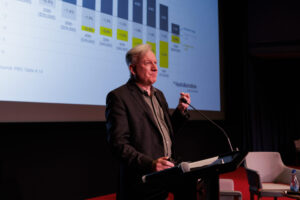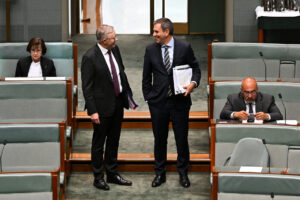In the lead-up to the 2013 election both the Coalition and the ALP pledged to make no changes to the superannuation system in the coming term of government. Stability, we were told, was what the system needed. Less than three years later both major parties are promising to change the superannuation system. Reform, we are told, is what the system needs.
What hasn’t changed in the last three years is the evidence for the existence of fundamental structural problems and chronic inequities within the superannuation system. Ten years ago I highlighted the empirical fact that most full-time workers would receive more from tax concessions for their superannuation than they would ever have been eligible to receive from the age pension. It has been clear for a decade that tax concessions for superannuation were a cost to the budget, not a source of saving.
ABSURDITIES
Originally published by The Australian Financial Review – here. (AFR Photo Stefan Postles)
The idea that superannuation tax concessions “take pressure off the budget” is as baseless in fact as it is widely held among its beneficiaries. Given that most of the concessions accrue to the wealthiest Australians who are ineligible for the age pension, how could helping them pay less tax help the budget bottom line? The logic is as absurd as it is convenient for its wealthy beneficiaries.
When viewed from the other end of the income distribution, the superannuation system yields similar absurdities. If its objective was to help “take pressure off the age pension” then a quick look at the data would suggest that the group most likely to rely on the pension is women who have worked in low wage jobs and have taken time out of the labour force to care for others. Guess which groups benefit least from tax concessions superannuation?
It gets worse. Under legislation passed by the Abbott government, those who earn below the $18,200 tax-free threshold will from 2017 pay more tax on their super contributions (the flat 15 per cent contributions tax rate) than they would on their ordinary pay (zero). Put another way, we force low income earners to spend 9.5 per cent of their income buying compulsory superannuation and then tax them more on that purchase than we would on their income.
Such obscene inequity is not an “unintended consequence” of some complicated change to the system. On the contrary, while the ALP had introduced the Low Income Superannuation Contribution (LISC) to prevent low income earners paying more tax on their compulsory savings than their income, Tony Abbott specifically sought to repeal that exact measure on the spurious basis that it had been “funded” by the mining tax, which he also repealed. Tellingly, Mr Abbott did not repeal most of the income tax cuts that were “funded by the carbon tax” when he repealed the carbon tax.
Compulsory superannuation is, on the whole, a good idea. There is no doubt the finance sector, which makes $20 billion per year administering the system, still loves Hawke and Keating’s plan to boost the retirement savings of the middle class. But the days when the primary purpose of superannuation was to help workers retire on more than the age pension are long gone.
In his first budget Peter Costello introduced a surcharge on high income earners’ superannuation contributions, arguing that the benefit they got from the flat 15 per cent contributions tax was expensive and unfair. In 2005 he scrapped his own surcharge and in his final budget he actually made all withdrawals from superannuation entirely tax free. The ATO tells us that at least one person has more than $100 million in their self-managed super fund. No doubt they sent Profligate Pete a Christmas card that year.
SIMPLE TO REFORM
It is important to realise that not only is the superannuation system broken, but it was deliberately broken by 10 years of policy intended to transform it from a system designed to boost retirement incomes for middle income workers, to one designed to avoid tax for Australia’s wealthiest families.
The new consensus that the system needs fixing is a welcome relief from the denial that pervaded the political and media debate just a few years ago. It is easy to improve the system. Reversing a decade’s worth of expensive and inequitable changes would be a good start.
Superannuation policy reform is quite simple. Taking money from the richest people in Australia has proved quite difficult in recent years. This could get interesting.
Richard Denniss is the chief economist at The Australia Institute. @RDNS_TAI
Related documents
Between the Lines Newsletter
The biggest stories and the best analysis from the team at the Australia Institute, delivered to your inbox every fortnight.
You might also like
Stage 3 Better – Revenue Summit 2023
Presented to the Australia Institute’s Revenue Summit 2023, Greg Jericho’s address, “Stage 3 Better” outlines an exciting opportunity for the government to gain electoral ground and deliver better, fairer tax cuts for more Australians.
Richard Denniss: National Press Club Address
On Wednesday, 31 January 2024, Richard Denniss and Allegra Spender MP addressed the National Press Club for a debate on the Stage 3 tax reforms. **Check against delivery** [See below for transcripts] Tax is good. Tax is an investment in our society and the highest taxed countries in the world also happen to be the
RN Breakfast: Redesigning the Stage 3 Tax Cuts
Richard Denniss joins ABC RN Breakfast with Patricia Karvelas to discuss redesigning the Stage 3 tax cuts.



